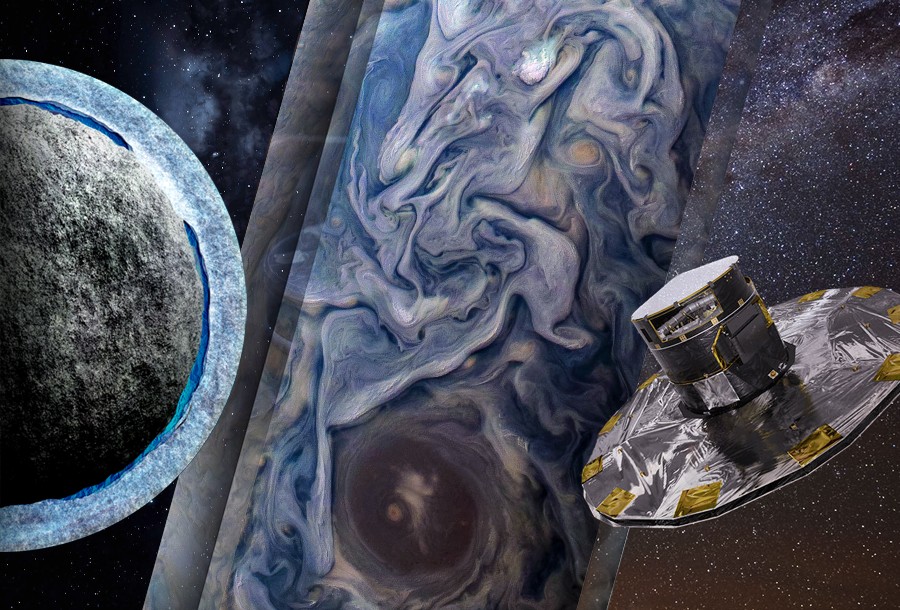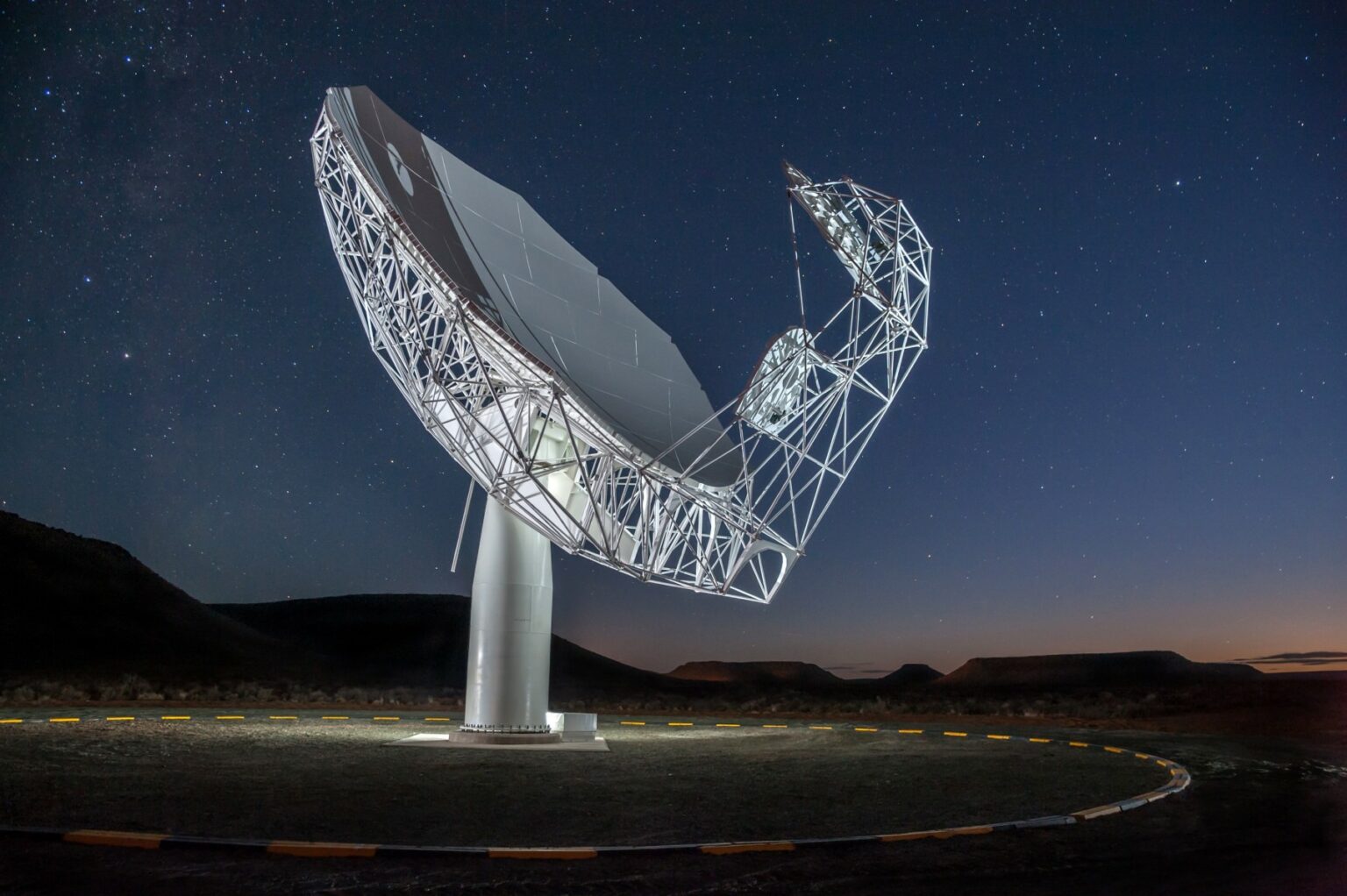Selection of the most interesting space news of the week: Gaia to help to find wandering black holes. NASA asks for help from volunteers in the study of Jupiter, and we tell how astronomers “weighed” the Universe.

- Liquid water can exist on non-Earth-like planets
- Gaia helps to find wandering black holes
- NASA asks for help from volunteers in Jupiter exploration
- The array of 1000 antennas of the SKAO telescope stretches from South Africa to Australia
- NASA gave stunning details of the first photos of James Webb
- Jeff Bezos abandoned a space project named after his mother
- NASA’s solar mission witnessed a stunning solar eclipse in space
- NASA astronauts grow a crop of space vegetables without soil
- The largest star in the Milky Way is dying and may turn into a black hole
- How astronomers weighed the universe (article)
Liquid water can exist on non-Earth-like planets
Scientists have modeled conditions on massive planets with hydrogen-helium atmospheres. They came to the conclusion that liquid water can exist on planets located much further away from the stars than the Earth. Therefore, life can exist on them. Researchers from the universities of Bern and Zurich have recently concluded that water in a liquid state can exist on planets completely different from Earth. On our planet, this matter is the main condition for the existence of life. And its presence is supplied by the atmosphere.
Gaia helps to find wandering black holes
According to researchers, the Gaia space telescope, observing billions of stars, can see traces of a wandering black hole. But it looks like there’s nothing like that in the latest data release. The passage of a black hole in front of a star is a rare phenomenon. But the Gaia Space Telescope observes hundreds of millions of astronomical objects every day, determining their spectrum, luminosity and motion vector. Andrews’ idea is that among such a huge array of information there should be cases when the apparent motion of a star unexpectedly accelerated for a short time.
NASA asks for help from volunteers in Jupiter exploration
Most of the recent images of Jupiter were taken by the Juno probe, which has been in orbit around the gas giant since 2016. Thanks to the spacecraft, we can admire the impressively beautiful atmosphere of Jupiter, which at the same time is a scientific mystery. To solve it, scientists invite everyone to help science by determining the atmospheric features of the planet, studying the data collected by Juno.
The project, founded by scientists from the University of Minnesota together with NASA, was named Jovian Vortex Hunter. Its idea is to classify the different types of Jupiter clouds in terms of their shape and size. Volunteers are asked to find certain features of Jovian clouds from a huge catalog of images captured by JunoCam. Vortices – clouds of round or elliptical shape, resembling giant terrestrial hurricanes, are of great interest.
Market News

The array of 1000 antennas of the SKAO telescope stretches from South Africa to Australia
The upcoming project called Square Kilometer Array Observatory (SKAO) is to become the world’s largest radio telescope, which will stretch in size from South Africa to Australia. Eventually, it is assumed that it will have thousands of antennas with a total opening area of more than one square kilometer. This will allow the telescope to look so far away that it can see everything up to the early stages of the universe.
SKAO is currently under construction. But before it can be used for scientific purposes, it is necessary to check it. This is the work of MeerKAT, an array of 64 antennas in South Africa, which will later become part of the SKAO system. Recently, astronomers from the SKAO headquarters in the UK checked the data of the South African 64 plates separately and with their help formed the most detailed large-scale picture of the Universe.
NASA gave stunning details of the first photos of James Webb
At a press conference held on June 29, NASA representatives reported some amazing details on the received images and talked about some updates on the work of James Webb. The team announced that the expected publication of the first images of the telescope will include the deepest image of the Universe and the spectra of one exoplanet. Despite the collision with a meteoroid, this did not prevent the telescope from getting the first color images. But for now, the images are being processed and will be made public on July 12.
James Webb has been attracting public attention since the very beginning of its launch. We were looking forward to the alignment of the telescope mirrors and the commissioning of scientific instruments due to cooling to ultra-low temperatures. These processes culminated in an extremely clear image of the Large Magellanic Cloud taken by the MIRI instrument in the mid-infrared range. Despite the fact that it was only a test raw image, it stunned everyone by how clear it was compared to images from other space telescopes.
Jeff Bezos abandoned a space project named after his mother
Blue Origin CEO Jeff Bezos has canceled plans to turn an ocean cargo ship into a site for the disposal of marine rockets, CNN Business reports. A special feature of the ship is also that it is named after the billionaire’s mother, Jacklyn Bezos.
Bezos bought the 180-meter cargo ship Jacklyn in 2018. In 2020, the billionaire announced that the ship would be converted into a base for re-capturing the boosters of the first stage of the Blue Origin New Glenn rocket. The ship was christened a bottle of champagne personally by Jacklyn Bezos.
Interesting

NASA’s solar mission witnessed a stunning solar eclipse in space
On June 29, the spacecraft took off the Moon, covering its view of the Sun. NASA’s Solar Dynamics Observatory recorded the solar eclipse from its unique vantage point in space – the only place where this eclipse was visible. “At the peak of the eclipse, the Moon covered 67% of the Sun. There were even noticeable lunar mountains illuminated by sunlight”, writes SpaceWeather.
NASA astronauts grow a crop of space vegetables without soil
To ensure long-term space missions, it is important for astronauts to be able to grow their own food — both for their physical and mental health. A number of experiments on growing crops have been conducted on the International Space Station (ISS) for a long time. Some even turn out to make delicious dishes in orbit. And recently, astronauts have been harvesting a unique crop.
Thanks to NASA flight engineer Jessica Watkins, the new method helped to grow and harvest radishes and mizuna greens in zero gravity conditions on board the ISS without any soil. Growing any edible plants in space is vital. But using soil to grow in cramped conditions on space stations creates potential problems with resources, clutter and sanitation. And that’s why a triumphant groundless harvest could be an exciting step towards a new era of interstellar discovery.
The largest star in the Milky Way is dying and may turn into a black hole
The hypergiant VY Canis Majoris is slowly dying, and researchers are closely studying this phenomenon. Astronomers from the University of Arizona have developed a model to track the activity of a red hypergiant star. VY Canis Majoris is one of the greatest stars in our Milky Way galaxy. At the same time, it is one of the brightest in our sky. Hypergiants are so large that in diameter they can exceed the distance between the Earth and the Sun by 10 thousand times. Moreover, their density is very low, 100 thousand times lower than air.
How astronomers weighed the universe (article)
Mass is one of the principal characteristics of physical bodies… and, perhaps, one of the most mysterious. And that is not just because so many people fail to figure out how to lose weight. Scientists have not yet been able to fully explain the phenomenon of mass as such. That is why the prediction and discovery of the particle “in charge”— the Higgs boson — was awarded the Nobel Prize in 2013. However, even without fully understanding its nature, we have already learned to accurately determine the mass of objects in a huge range — from the electron to the whole Universe.
Follow us on Twitter to get the most interesting space news in time
https://twitter.com/ust_magazine
